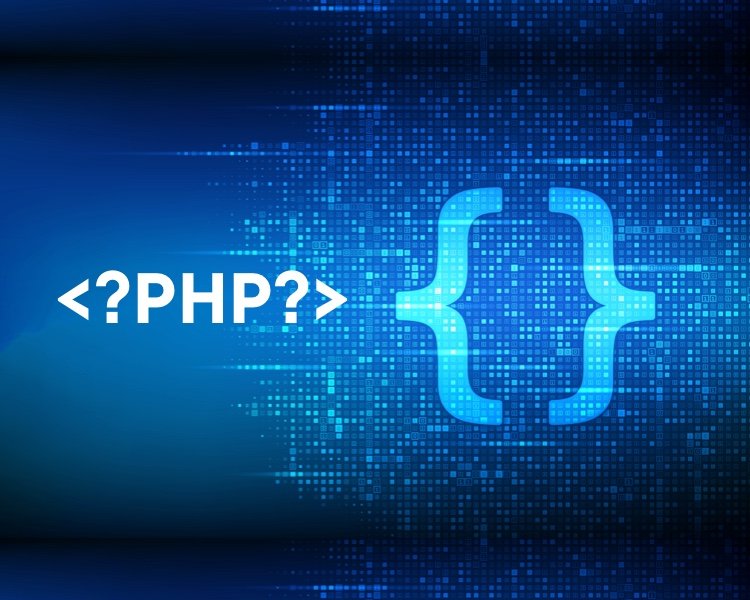Skills you need to become a backend developer
Published

Backend developers are in high demand, and there are some important skills you need to learn if you want to become one. But fear not - if you've ever peeked under the hood of your car for fun or sneaked backstage to get a first-hand look at what goes on behind the curtain at a show, you already have the curiosity to know the back-end drives developers. With a little effort and training, you may be able to use your natural curiosity to build a rewarding career, but that ultimately depends on mastering the basic backend development skills.
If you want to acquire new backend skills or expand your existing skills, Skillshare is suitable for you. Please click here to access Skillshare's learning platform and gain new insights into a wide variety of topics.
The 9 Skills You Need to Become a Backend Developer
What back-end developers do (and how it relates to front-end development)
Before we delve into these capabilities, let's first consider backend development in its larger context. While front-end developers take care of the visible parts of a website such as: For example, the design or functionality of the display, back-end programmers devote their time to designing, correcting, and modifying the aspects of a software application or information system that a typical user never sees. They are the Oz assistants of the technology sector, designing the core features and components of the programs that drive consumers' digital experiences.
When a user makes a request to the system through a front-end framework (i.e., a consumer-side framework), it is the responsibility of the back-end developers to ensure that a program can provide the requested data or information. These developers also have other tasks. You maintain core databases, manage application program interfaces (APIs), and test and debug backend processes to ensure that a program runs smoothly and effectively at all times.

Those: kinsta.com
Sounds complicated? It is. But if the prospect of analyzing the inner workings of an application and learning how to make it better excites you, then there's no better time to take on the challenge. With the world's growing social and economic reliance on digital channels, employers need talented backend developers more than ever.
Statistics from marketing software giant HubSpot show that the digital world is thriving; Researchers predict that global e-commerce retail sales will reach $4.5 trillion by 2021. Today, almost half of Americans pick up their smartphone before they even get out of bed! We watch the news, chat with friends, check our email, and visit our favorite social media and brand websites. With all this interest in online shopping and brand exploration, companies need to have functional, well-optimized websites and applications - and the developers who build them.
Given these numbers, it's no surprise that the job outlook for web developers is excellent. In 2018, the Bureau of Labor and Statistics (BLS) predicted that the profession would grow a remarkable 13 percent by 2028 - much faster than the average for all other professions, which is just 5 percent, they write. BLS researchers attributed the rapid growth to the rapidly increasing popularity of mobile devices and e-commerce.
The tech sector's need for talented developers isn't going away any time soon. If you are curious, tech-savvy and want to understand how systems work behind the metaphorical curtain, learning the basic skills for backend development can open up an exciting career for you.
The 9 essential skills of backend development and how to learn them
Most backend developers have at least some formal training, and many have a bachelor's degree in computer science or advanced mathematics. A writer from CareerExplorer explains: "Compared to front-end developers, back-end developers may need to abstract more - they might do data mining, write abstract algorithms, and so on."
Although the requirements of Job to job vary, backend developers must have some familiarity with, if not master, various technical languages and programs. Some of these essential backend developer skills include: Python , Java , SQL, NoSQL und Git.
There are countless paths an aspiring developer can take to improve their skills. As mentioned, a four-year degree is a common option. However, if you are unable to devote the time or financial resources required to pursue an undergraduate degree - or if you already have a degree in another field - you may want to consider alternative education solutions, such as: B. a coding bootcamp to learn web development that can teach the technical skills backend developers need in a short time and at a reasonable cost.
Ultimately, the educational path you take is less important than the technical and non-technical skills you acquire in building a career in backend development. Now let's take a closer look at the 9 backend development skills.
1. Python
If you want to become a backend developer, you need to develop your Python skills. Although Python has nothing to do with the snake that inspired the name, it is one of the most important languages used in development today. In 2019, a study conducted by Stack Overflow ranked Python as the "fastest-growing major programming language" in the world, ahead of Java and second only to Rust in favorability ratings. A whopping 41.7 percent of the 90,000 respondents said they used Python in 2018.

Those: mytaskpanel.com
The popularity of the language is well deserved. It handles simple and complex web projects with equal ease and is used in a variety of sectors, from healthcare to finance to travel. Well-known industry giants such as Spotify, Instagram, Disqus and Dropbox have all developed their applications using Python syntax.
The reason for Python's popularity is simple: it supports multiple programming styles and offers excellent data visualizations. Python allows developers to use procedural, functional, and object-oriented programming approaches alike. The language's support for extensive data libraries makes visualization easy and development fast. Plus, Python is relatively easy to learn.
As a Django Stars technical editor noted on the topic: "The simplicity of the syntax allows you to deal with complicated systems and ensures that all elements have a clear relationship with each other. Thanks to this, more novice programmers can learn the language.
Of all the skills backend developers need to have, Python is at the top of the list.
2. Java
First of all, let's make one thing clear: Java is not JavaScript. While the two have similar names and briefly overlapped during the Netscape era, they are incredibly different. In the words of tech journalist David Diehl: "The evolution of the two languages has followed such different paths since [Netscape] that people joke that Java is to JavaScript what a hamster is to a hamster is.".

Those: seo-analyse.com
Simply put, Java is a general-purpose programming language for application development, while JavaScript is primarily used for incorporating animation and interactivity into websites. Both have similarities; both can e.g. B. run on a browser or server. However, they differ significantly in their capabilities and execution.
Java is primarily intended for backend development. A more robust system, Java is typically written in an integrated development environment (IDE) before being compiled into bytecode, or low-level code, that can be read by a software interpreter rather than human developers. JavaScript, on the other hand, can usually be executed in its original syntax via a JavaScript engine. In general, Java is capable of handling more robust programming tasks than its front-end counterpart.
Java is an incredibly useful skill for backend developers; it is a high-performance language that supports object-oriented programming and can run in any system that supports a Java Virtual Machine.
3. PHP

Those: netsolutions.com
PHP (Hypertext Preprocessor) is one of the most widespread and widely used server-side languages in the development field. Unlike Python or Java, PHP is a scripting language, which means that it uses scripts - i.e. H. Programming instructions - interpreted at runtime to automate routine processes or improve the performance of an application.
According to Guru99 statistics, over 20 million websites and applications have been developed using PHP. And for good reason: PHP is open source, easy to learn, and inexpensive, as most web hosting servers already support the language by default. Another advantage is the built-in support for the popular MySQL relational database (see below).
Although PHP is not essential for backend developers if they know other major programming languages, being familiar with PHP definitely makes an aspiring programmer more marketable.
4. SQL
Technology may become obsolete quickly, but SQL seems to be an exception to the rule. Since Structured Query Language (SQL) was declared a standard language by the American National Standards Institute (ANSI) in 1986, backend developers have been able to access and manipulate relational databases as needed. SQL allows programmers to easily insert and delete records, query a database, create new tables and storage procedures in a database, and even set permissions on these tables and procedures. If you ever need to work with relational databases - and as a backend developer you undoubtedly will - you need to know SQL.
If you want to get familiar with this language, you should try an open source platform like MySQL. MySQL, named after inventor Mondy Widenius's daughter, My, is offered by Oracle and provides free access to the source code of SQL databases. It is also relatively easy to use as it can be installed on desktops and servers. It also runs on platforms such as Linux, Windows and UNIX.

Those: blog.servermania.com
However, SQL is not the only language used to manipulate databases. In 1998, developer Carl Strozz introduced the concept of a NoSQL language. The name of NoSQL is controversial among programmers. While some believe that the term stands for Non-SQL, others insist that it does not mean just SQL. In any case, a NoSQL language communicates with databases that store information in ways other than a relational table.
The decision to use SQL or NoSQL depends entirely on the needs of the developer. Both work well, as MongoDB's programmers explain in an overview on the topic: "A common misconception is that NoSQL databases or non-relational databases cannot store relationship data well. NoSQL databases can store relationship data - they just store it differently as relational databases."
Backend developers would do well to have both skills in their repertoire.
5. Git

Those: codeburst.io
If you are looking for a widely used modern version control system that meets your needs, Git is a good choice. It is actively maintained and comes from the pen of the founder of the Linux operating system, who also developed it. Any developer who has a working copy of the code can easily access the full history of changes made, making it easier to edit and restore the code. Git is one of the most powerful, flexible and secure solutions for backend developers.
6, 7, 8: The front-end triumvirate
This list of backend developer skills would be incomplete without three very important programming languages: HTML, CSS, and JavaScript. Although these languages are more common in... Frontend are used, they are also useful for backend developers. After all, these three languages determine everything a page visitor sees, from the text to the images to the scrolling drop-down menus.
So what are these languages?
- HTML: HTML is the most fundamental building block of the Internet. In conjunction with the other two languages, it determines the structure of websites.
- CSS: This language determines how elements on a web page are rendered and standardizes their display across browsers.
- JavaScript: This language is most commonly used as a scripting language for web pages, but can also be used in non-browser elements such as Adobe Acrobat.

Those: kinsta.com
The three languages work together in front-end development and form the design of a website from the front-end perspective. They provide direction and information about the style and content of a website and how users interact with it.
You may be wondering why these front-end skills are essential for a back-end developer. The truth is that there is no clear distinction between the two career paths. Even if developers focus exclusively on front-end or back-end development, there is some overlap in the skills required for both web development specializations. Additionally, companies like to hire developers who have multidisciplinary skills; This versatility is the main reason cross-functional “full-stack” developers can be so attractive in the hiring pool.
However, not all companies need programmers with multiple areas of expertise. While full-stack developers can be useful for companies that have limited resources and cannot justify separate back and front-end teams, many larger companies have separate departments for their developers and have a need for back-end specific ones professionals.
9. Communication
While there are many technical skills that a backend developer needs, there are also some useful non-technical skills, and communication is at the top of that list. If you have good communication skills, you will find it easier to collaborate, be it with other backend developers or with frontend developers working on the same projects. The ability to communicate clearly also helps when working with business managers and other professionals who do not have the same background in development and programming.
A final note about the profession of backend developer
A career in backend development is an excellent option for anyone interested in programming and passionate about technology. As you work toward deciding what career path you want to pursue, you will also decide what your educational path will look like. You've probably noticed that C++ and C# missing from our list. Here is a Contribution in addition.








